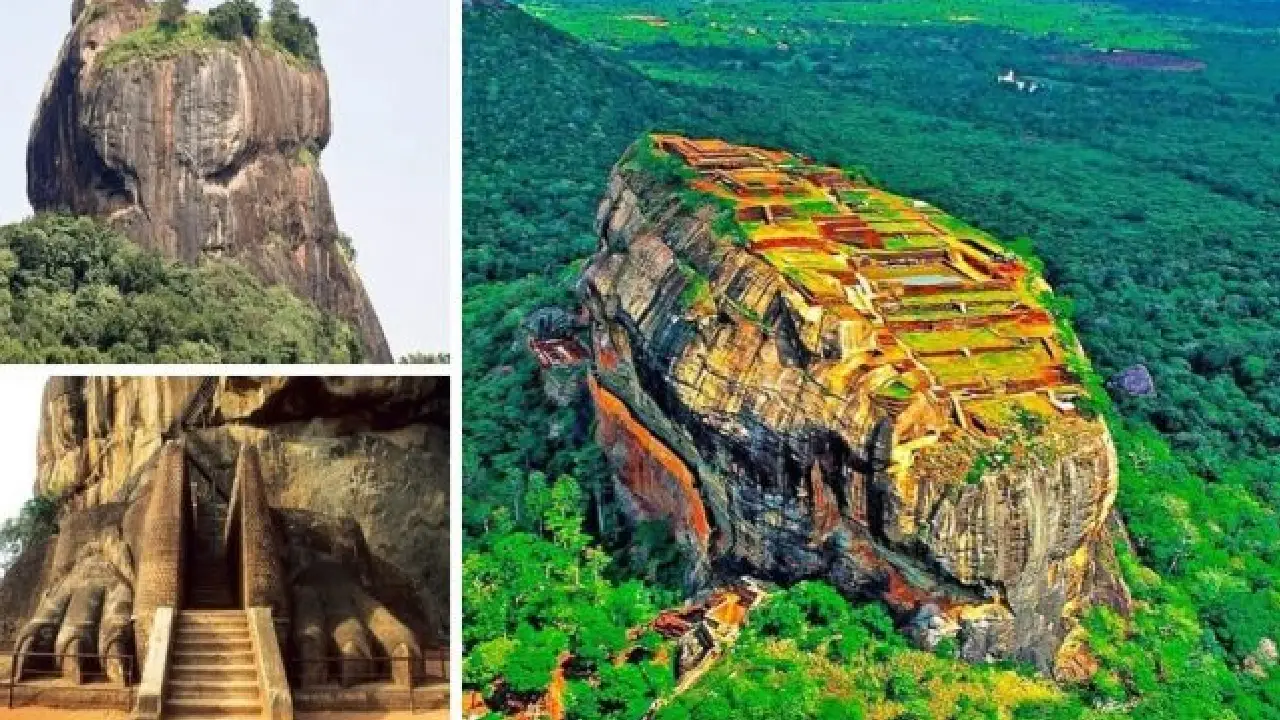Rising dramatically from the heart of Sri Lanka, the Sigiriya rock fortress is a breathtaking blend of nature’s power and human creativity. Towering 200 meters above the surrounding plains, this ancient site is more than just a geological marvel—it’s a story carved in stone, wrapped in myth, art, and mystery.
Sigiriya isn’t merely a rock or a forgotten ruin. It’s a monument to a lost kingdom and a time when architecture reached for the divine.
A Palace in the Sky
Sigiriya stands atop the hardened core of an extinct volcano—a rugged magma plug left behind as the mountain eroded over millennia. When King Kasyapa seized the throne in 477 CE, he chose this imposing rock as the heart of his new capital. Its height offered protection, dominance, and perhaps a pathway to the heavens.
But Kasyapa didn’t just construct a palace—he created an entire city sculpted into the rock’s summit, slopes, and base. From terraced gardens and fortified walls to elevated chambers and water features, every element of Sigiriya was carefully planned and executed.
Design Beyond Its Time
According to Sri Lankan legend, the fortress was designed by Maya Danava, a mythical architect said to possess cosmic knowledge. Whether rooted in folklore or fact, the layout of Sigiriya reflects a level of sophistication that challenges conventional timelines.
One of its most iconic features is the pair of massive lion’s paws carved into the rock, remnants of a colossal lion-shaped gateway that inspired the name Sīhāgiri, or Lion Rock.
A Fusion of Nature, Engineering, and Art
Sigiriya was more than a defensive outpost. It was a symbolic microcosm of the universe. The site incorporates an advanced understanding of hydrology, symmetry, and aesthetics.
At its base lie some of the most exquisite gardens of the ancient world—complete with artificial ponds, flowing terraces, and fountains that still function today thanks to underground hydraulic systems.
Midway up the rock is the Mirror Wall, once polished so finely that the king could admire his reflection as he walked by. Over centuries, visitors left behind poems and scribbled thoughts—some dating back over a millennium—creating one of the oldest records of Sinhala writing.
And then there are the famous Sigiriya frescoes: radiant, half-divine women painted against an airy backdrop. Once plentiful, only a few remain today, but their beauty continues to captivate.
A Sacred Site Before the Fortress
Long before Kasyapa, Sigiriya held significance. Evidence shows that humans lived around the rock for over 5,000 years, and Buddhist monks meditated in its nearby caves as early as the 3rd century BCE. It likely served as a sacred site before becoming a royal citadel.
After Kasyapa’s death in 495 CE, the palace was abandoned and transformed into a monastery. Eventually, the site faded into obscurity, hidden beneath jungle growth until British explorers rediscovered it in the 1800s.
Today, Sigiriya is a UNESCO World Heritage Site and a magnet for history lovers from around the globe.
Sigiriya’s Silent Mysteries
What exactly was Sigiriya? A royal retreat? A military fortress? A cosmic temple? No one truly knows. Kasyapa’s motives remain elusive—was he running from his enemies, reaching for the divine, or both?
Some scholars believe the rock was intended to represent Mount Meru, the mythical center of the universe in Hindu and Buddhist traditions. Others ponder the missing lion’s head that once crowned the gate.
Despite decades of research, Sigiriya keeps many of its secrets hidden. What remains clear is this: the people who built it aimed higher than mere survival. They sought to leave a legacy—in stone, in sky, and in spirit.
And perhaps that mystery is the point. Some creations were never meant to be fully understood—only admired.

Leave a Reply